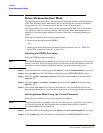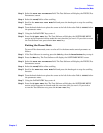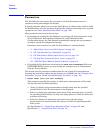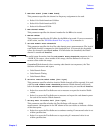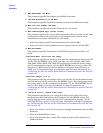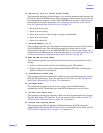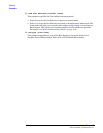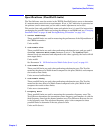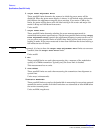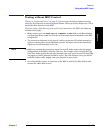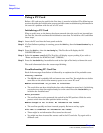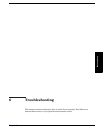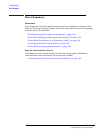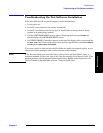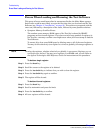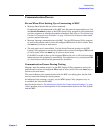
Reference
Specifications (Pass/Fail Limits)
Chapter 5
O:\Manuals\E6385A_Cdma\Book\Referenc.fm
116
6. Output Power Adjustment Error
These pass/fail limits determine the manner in which the power meter will be
displayed. When the power meter display is shown, it will include major tick marks
that indicate the adjustment range for power settings. If you enter ±1 dB as the
limits, the meter will be drawn with the ideal setting in the center and major tick
marks 1 dB up and 1 dB down from center.
Units are dB.
7. Output Power Error
These pass/fail limits determine whether the power measurement made in
automated testing meets specifications. (The previous pass/fail limits setting (Output
Power Adjustment Error) controls the adjustment diagram in power meter use.) If
you set power error pass/fail limits of ±2 dB, these limits will be used when a power
reading is made. If the power measured is more than 2 dB from the desired setting, a
fail indication (F) will result.
NOTE In general, it is best to have the Output Power Adjustment Error limits set narrower
(smaller) than the Output Power Error limits.
Units are dB.
8. Rho
These pass/fail limits are used when measuring rho, a measure of the modulation
quality of a CDMA transmitter. Typically, only the lower limit is checked.
This measurement has no units.
9. Time Offset
These pass/fail limits are used when measuring the transmitter time-alignment to
system time.
Units are
µ
s (microseconds).
10.Emission Bandwidth
These pass/fail limits are used as the bandwidth in measuring for two points centered
around the carrier, outside of which all emissions are attenuated at least 26 dB below
the carrier transmit power.
Units are MHz (megahertz).



